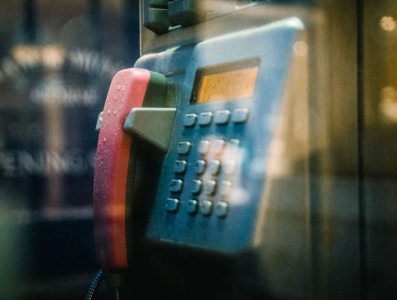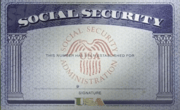Major changes are hitting Social Security—and they could impact your benefits big time
- Replies 1
If you’re one of the nearly 70 million Americans who rely on Social Security each month, you know that even small changes to the system can have a big impact on your daily life.
Well, buckle up, because the Social Security Administration (SSA) has just rolled out a series of updates that could change the way you interact with the agency—and even how you receive your benefits.
Under the leadership of new Commissioner Frank Bisignano, the SSA is on a mission to modernize. The agency’s vision? “Outstanding service that works for everyone we serve—whether they call, walk into a field office, or choose to manage their benefits online.”
Let’s start with the good news. The SSA has invested in new telephone technology for its national 800 number and field offices.
The result? Last week alone, the agency handled nearly 1.3 million calls—a whopping 70% increase over the same week last year.

Even better, the average wait time to speak to someone dropped from 30 minutes to just 6 minutes. That’s a cup of coffee instead of a whole lunch break!
Field office visits are also getting speedier. Average wait times have shrunk from 30 minutes to 23 minutes. And if you prefer to handle your business online, you’ll be happy to know that the my Social Security portal is now available around the clock.
The SSA eliminated its old 29-hour weekly downtime, allowing 125,000 more people to access their accounts in just the first week.
In a move that’s sure to please many, the SSA recently began sending out 3.1 million payments ahead of schedule to recipients eligible under the Social Security Fairness Act.
This law helps public service workers—think teachers, firefighters, and police officers—who were previously shortchanged by the Windfall Elimination Provision (WEP) and Government Pension Offset (GPO).
And for those waiting on disability claims, there’s a glimmer of hope: the backlog of pending cases has dropped from over 1.2 million to 940,000. It’s still a big number, but it’s moving in the right direction.
Read also: Don’t let these 3 surprising Social Security changes drain your retirement in 2025
Of course, not everyone is cheering. The SSA’s modernization push comes at a time when the agency is facing its worst funding crisis in decades.
According to the latest projections, Social Security’s combined retirement and disability trust funds could run dry by 2035. If that happens, the program may only be able to pay about 83 cents on the dollar.
Some experts, like finance writer Michael Ryan, warn that these tech upgrades are as much about cutting costs as they are about improving service.
“Every ‘modernization’ is really a cost-cutting measure disguised as improvement,” he says. “Those electronic signatures and digital uploads? They’re not about your convenience; they’re about reducing the army of federal workers processing your paperwork.”
Others, like financial literacy instructor Alex Beene, see both sides: “For beneficiaries, it’s a positive sign… However, for the employees of the administration, this could further strain their workforce which is having to take on more tasks in an already heavy schedule.”
Read also: Don’t miss out: One move you must make before major Social Security update takes effect
Here’s a change you can’t afford to ignore: Starting September 30, the SSA will stop issuing paper checks for benefit payments.
If you’re still receiving your Social Security by mail, you’ll need to switch to direct deposit or a prepaid debit card.
The SSA says this move will make payments faster and more secure—but it also means you’ll need to take action soon if you haven’t already.
Read next: Big changes are coming to Social Security’s phone lines—what it could mean for you

Have you noticed improvements in your Social Security experience? Are you worried about the end of paper checks or the future of the program? Do you have tips for managing your benefits online?
Well, buckle up, because the Social Security Administration (SSA) has just rolled out a series of updates that could change the way you interact with the agency—and even how you receive your benefits.
Under the leadership of new Commissioner Frank Bisignano, the SSA is on a mission to modernize. The agency’s vision? “Outstanding service that works for everyone we serve—whether they call, walk into a field office, or choose to manage their benefits online.”
Let’s start with the good news. The SSA has invested in new telephone technology for its national 800 number and field offices.
The result? Last week alone, the agency handled nearly 1.3 million calls—a whopping 70% increase over the same week last year.

That’s a tall order, but recent changes suggest they’re serious about making things easier and faster for recipients. Image source: Flemming Fuchs / Unsplash
Even better, the average wait time to speak to someone dropped from 30 minutes to just 6 minutes. That’s a cup of coffee instead of a whole lunch break!
Field office visits are also getting speedier. Average wait times have shrunk from 30 minutes to 23 minutes. And if you prefer to handle your business online, you’ll be happy to know that the my Social Security portal is now available around the clock.
The SSA eliminated its old 29-hour weekly downtime, allowing 125,000 more people to access their accounts in just the first week.
In a move that’s sure to please many, the SSA recently began sending out 3.1 million payments ahead of schedule to recipients eligible under the Social Security Fairness Act.
This law helps public service workers—think teachers, firefighters, and police officers—who were previously shortchanged by the Windfall Elimination Provision (WEP) and Government Pension Offset (GPO).
And for those waiting on disability claims, there’s a glimmer of hope: the backlog of pending cases has dropped from over 1.2 million to 940,000. It’s still a big number, but it’s moving in the right direction.
Read also: Don’t let these 3 surprising Social Security changes drain your retirement in 2025
Of course, not everyone is cheering. The SSA’s modernization push comes at a time when the agency is facing its worst funding crisis in decades.
According to the latest projections, Social Security’s combined retirement and disability trust funds could run dry by 2035. If that happens, the program may only be able to pay about 83 cents on the dollar.
Some experts, like finance writer Michael Ryan, warn that these tech upgrades are as much about cutting costs as they are about improving service.
“Every ‘modernization’ is really a cost-cutting measure disguised as improvement,” he says. “Those electronic signatures and digital uploads? They’re not about your convenience; they’re about reducing the army of federal workers processing your paperwork.”
Others, like financial literacy instructor Alex Beene, see both sides: “For beneficiaries, it’s a positive sign… However, for the employees of the administration, this could further strain their workforce which is having to take on more tasks in an already heavy schedule.”
Read also: Don’t miss out: One move you must make before major Social Security update takes effect
Here’s a change you can’t afford to ignore: Starting September 30, the SSA will stop issuing paper checks for benefit payments.
If you’re still receiving your Social Security by mail, you’ll need to switch to direct deposit or a prepaid debit card.
The SSA says this move will make payments faster and more secure—but it also means you’ll need to take action soon if you haven’t already.
Read next: Big changes are coming to Social Security’s phone lines—what it could mean for you
Key Takeaways
- The Social Security Administration has introduced new technology, leading to significantly faster response times for calls and field office visits, and improved access to online accounts for millions of recipients.
- Despite these tech upgrades, experts warn that the agency is facing a severe funding crisis, with trust funds possibly running out by 2035 and payments potentially being cut to 83 cents on the dollar in ten years.
- The SSA is also reducing staff numbers and modernizing services, a move some say is more about cost-cutting than customer convenience, which could result in more automation and fewer staff to help when things go wrong.
- From 30 September, the SSA will stop issuing paper checks for benefit payments, meaning all recipients will need to receive their payments electronically moving forward.






